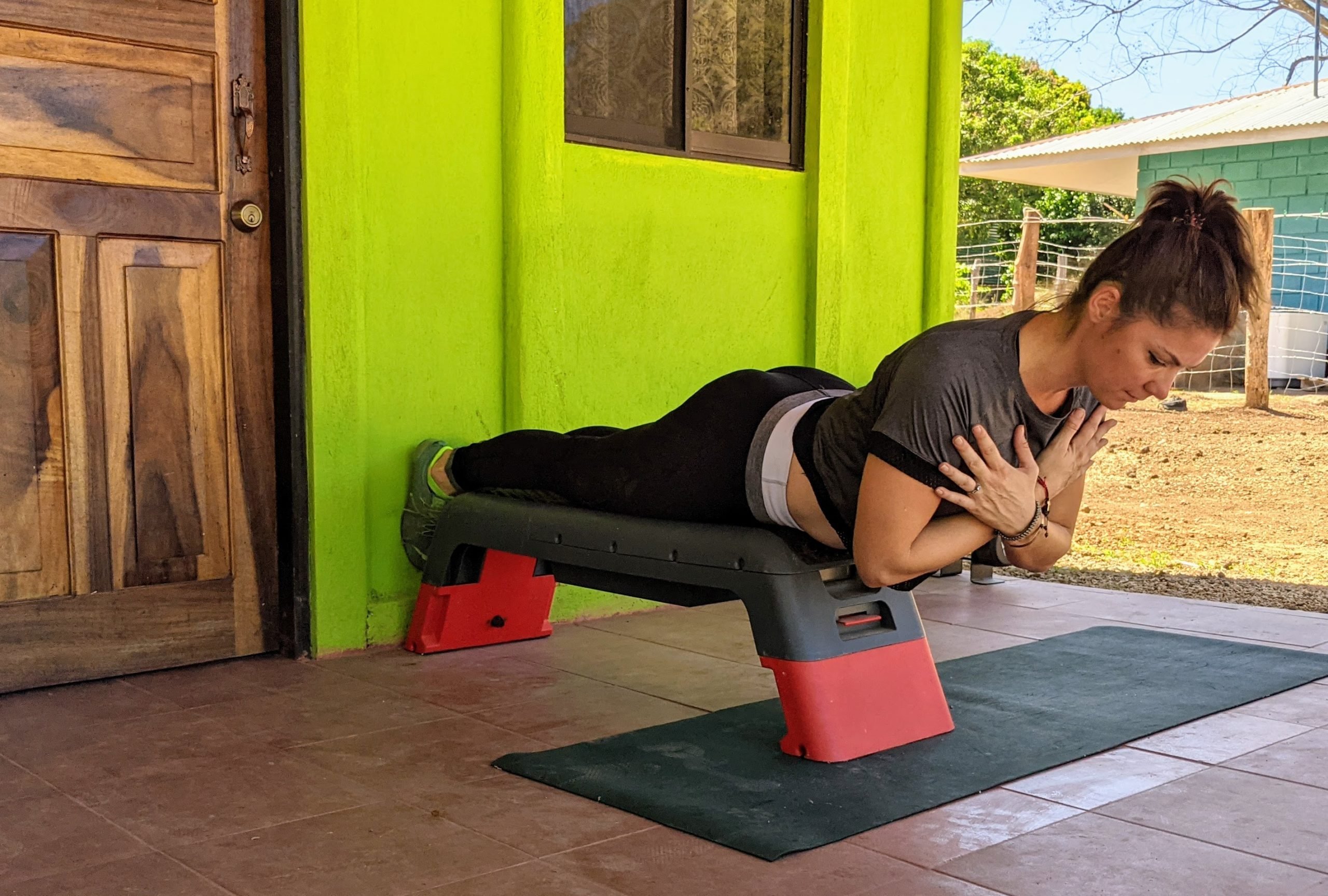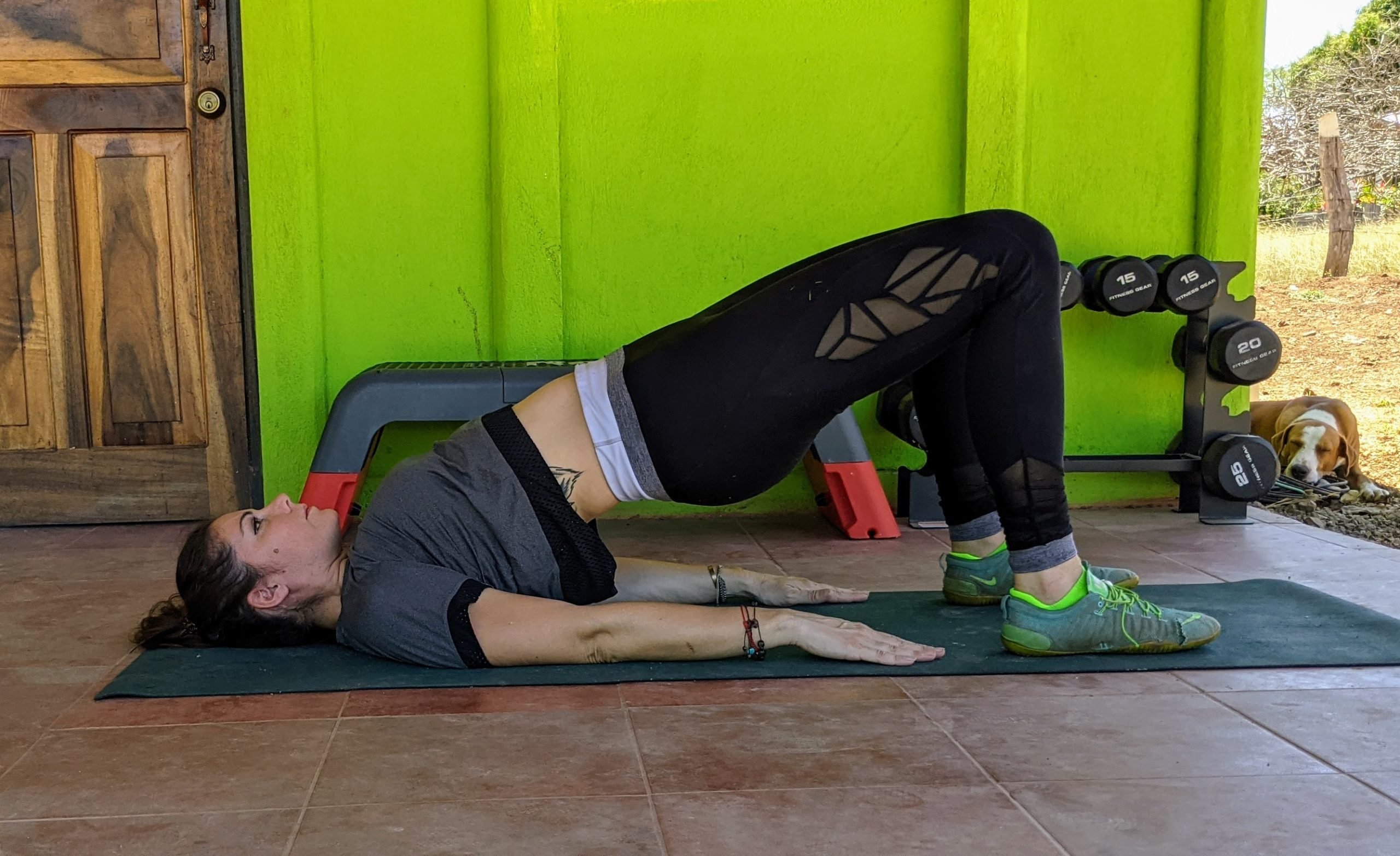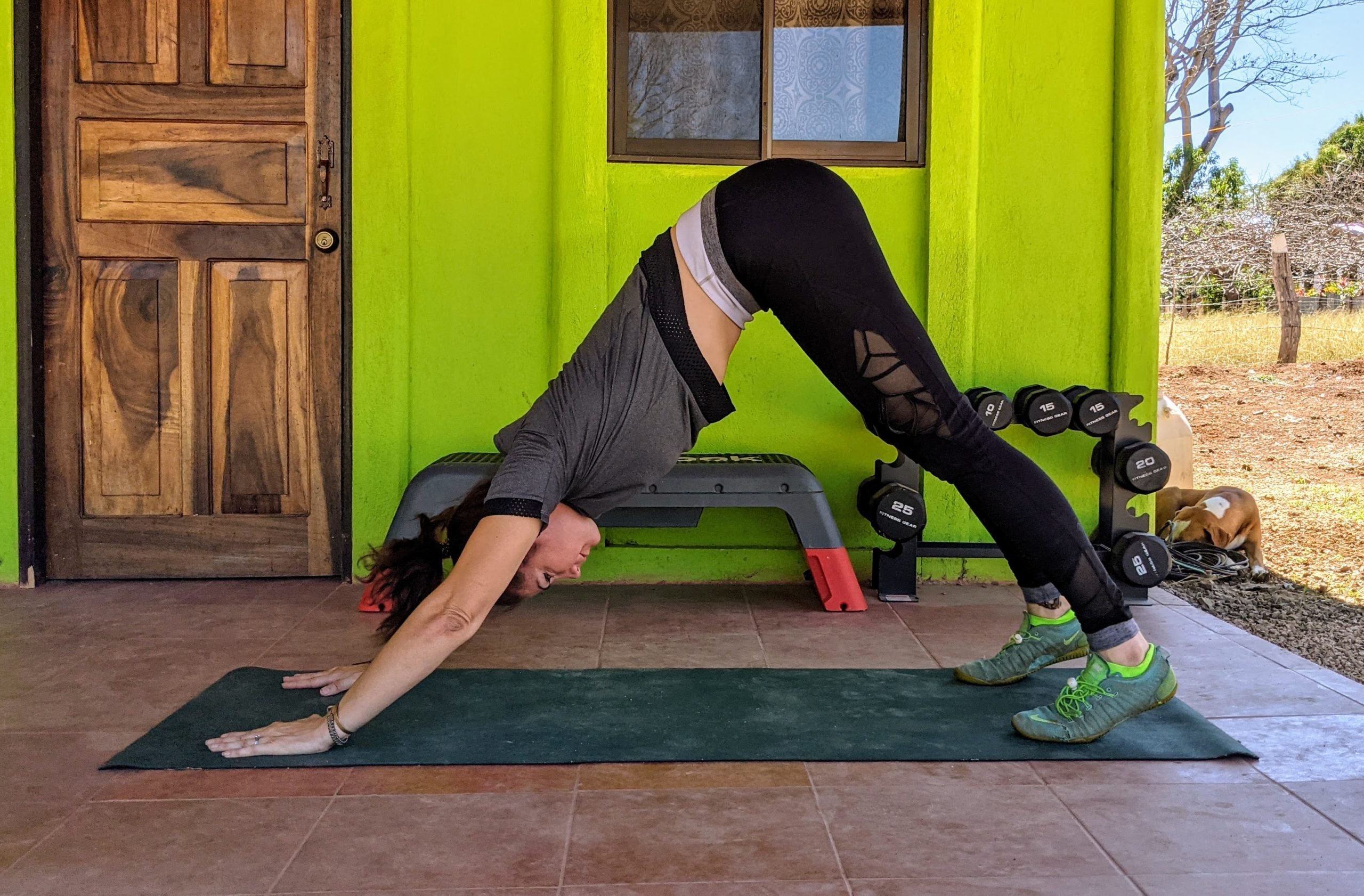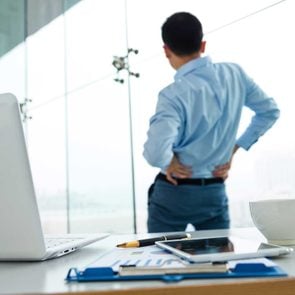4 Exercises for Lower Back Pain
Updated: Jun. 10, 2021
A well-balanced exercise routine is key to prevent and reduce low back pain.
Understanding lower back pain
Lower back pain can be a true nightmare. If you’ve ever been laid up with an acute low back injury, or you’ve been plagued with ongoing, chronic pain, you know how it can take over your life. It can prevent you from even standing up or sitting down without experiencing a jolt of agony.
The thing about back pain, though, is that the source can be a bit elusive. There are a slew of causes, including everything from a pulled muscle or bulging disc to arthritis, kidney infections, or even a tumor. And sometimes there’s no obvious or single cause for the inflammation and resulting pain. (These are the everyday habits that are damaging your spine.)
Why so many people experience low back pain
According to the American Chiropractic Association, 80 percent of adults will experience back pain at some point in their lives, and it’s the single leading cause of disability worldwide. (Here’s how your brain helps low back pain.)
What’s frustrating is that despite the growth in professional fields that have a vested interest in curbing and reducing back pain, the rates of back injury haven’t actually gone down.
“Currently, the data (peer-reviewed publications and research) show that chiropractic, physical therapy, yoga, back classes, surgeries, stretching, etc., are all falling short when it comes to the treatment of back trouble,” says Michael Ross, a chiropractor, strength and conditioning specialist, and a diplomate of the American Chiropractic Rehabilitation Board.
“The numbers speak for themselves in that 80 to 95 percent of Americans will have a debilitating episode of back trouble and over 30-percent of those will become chronic issues. There are more yoga instructors, more back surgeries, more stretching books, more physical therapists, and more chiropractors than ever, and yet the occurrence of back trouble has not gone down,” he says.
(Try these expert-approved natural back pain remedies.)

Causes of low back pain
When it comes to low back pain, there are likely many factors at play, including general changes in lifestyle over the years. More and more people have sedentary desk jobs, and even outside of work, there’s a propensity to sit more, often with poor posture. These include long pre-pandemic commutes, hours spent watching children’s activities, and free time spent glued to smartphones and TVs. There’s also less manual labor and moving around, even to do regular chores.
(Here are the 9 best posture correctors to try.)
In addition, the standard American diet (SAD diet) is filled with processed foods and little produce, which can lead to nutritional deficits and health problems such as obesity that may inadvertently contribute to back pain. A study in the journal of The North American Menopause Society (NAMS), for example, found that vitamin D deficiency is a risk factor for greater back pain. Additionally, obesity is correlated with an increased risk of injury and pain, according to a 2018 study in the journal Medicine.
(Here are surprising reasons for back pain.)
More movement is the first step
Movement can do wonders for preventing and reducing the risk of back pain. Start by making a concerted effort to move more and by including exercise as a regular part of your routine.
“Movement is the best thing you can do, in general,” says Lauren Frison, a licensed physical therapist, strength and conditioning specialist, and the owner of APEX Physical Therapy. “That doesn’t mean go crazy and do whatever you want as much as you want,” she says.
“You want to break your movement or exercise up into manageable chunks that don’t significantly increase your baseline level of pain, and try to progress gradually,” she explains. Make sure you’re warming up and doing stretches for lower back pain, too.
Contrary to popular belief, there’s no one form of exercise that’s going to be the magic bullet. Cranking out hundreds of abs, logging hours of cardio, lifting heavy weights, or stretching until you can touch your toes will not directly guarantee a back pain-free life. (However, these products for lower back pain can help provide relief.)
How to add movement outside of exercise
It’s really about movement as a whole. Michael E. Gomez, MD, neurosurgeon and medical director of Minimally Invasive Spine Surgery with Miami Neuroscience Institute agrees. “It’s important to make time for movement since it’s key in helping to prevent or alleviate back pain, as well as to prevent poor posture, which can lead to chronic fatigue and deconditioning of your muscles,” he says.
But Dr. Gomez points out that this movement can (and should) be incorporated throughout your day, not just during your slated exercise period. “When working… make sure to get up from your workstation every hour and walk around, and try to schedule the time for a short walk during your lunch break,” he says. (Here’s how to deal with morning back pain.)
OK, so you get it—move more and be sure to exercise. But how can this translate into an actual routine? It’s simple—try to incorporate exercise in a way that meets the Centers for Disease Control and Prevention (CDC) recommended guidelines for physical activity for adults. This can be as simple as combining cardio, flexibility, and strength training in a way that helps bolster whole health.
Exercises for lower back pain

Back extensions
You know that odd-looking back extension bench in the corner of the gym that’s often overlooked? It’s time to get familiar with it.
Ross points out that landmark research from 1983 (confirmed again in 1999 in Spine) regarding this one piece of equipment is too often overlooked by clinicians.
“Honestly, I don’t know why. Quite simply, this research from Biering-Sorensen found that the longer someone could hold a back extension exercise, up to four minutes, the lower their likelihood of developing low back trouble over the next year. Essentially, we can predict someone’s risk of developing low back trouble by having them do an easy-to-reproduce test,” he says.
Even more to the point, performing the test on a regular basis (you know, as a form of exercise), can actually reduce the risk of future occurrence of low back pain or problems.
So if you’re going to start somewhere, you should start by performing back extensions on a regular basis. The key is to start with back extension holds, rather than working through a range of motion.
Using a back extension bench, exercise bench, or a sturdy ottoman with your feet braced or hooked under another sturdy object for stabilization, cross your hands across your chest and position yourself with your hips secure against the front of the bench in a slightly hyperextended position.
In other words, your body should form an almost straight line from heels to head, but your low back should be engaged to lift your torso slightly higher, putting a very slight hyperextension in your low back.
Then, simply hold the position as long as you can, being sure to time yourself. This test gives you your hold test time. (Here are some foam roller exercises.)
How to add a back extension to daily routine
Ross says once you’ve recorded your number, incorporate a back extension hold into your routine every other day as follows:
-
Complete one hold for 50-percent of your hold test number.
-
Rest for one minute.
-
Complete a second hold for 75-percent of your hold test number.
-
Rest for one minute.
-
Complete a third hold, aiming to reach 125 percent of your hold test number, or as long as you can, whichever comes first.
When you’ve been able to perform a hold at 125 percent for three consecutive sessions, repeat your initial hold test to get a new number and start the process again.
Low-impact cardio
The CDC recommends accumulating at least 150 minutes of moderate-intensity cardiovascular activity each week, but unfortunately, only about 50 percent of the adult population actually meets that goal. This lack of regular and sustained movement isn’t going to keep the back pain at bay.
Lara Heimann, a licensed physical therapist and yoga instructor with an advanced certification in neurodevelopment from Stanford University, points to low-impact cardio, like brisk walking, as an excellent step toward back pain prevention.
“Moving the body increases the blood flow and nutrients to the muscles and overlying and adjoining soft tissues, which not only reduces tension but also improves healing,” she says.
Walking is an accessible activity for practically everyone. It’s an excellent way to improve posture and strengthen the muscles of the lower body and spinal erectors that so often get weak and tight from sitting all day.
Aim to log roughly 30 minutes a day, but you can break it up into smaller sections of 10- or 15-minute bouts if it’s easier to squeeze in that way. And if you don’t like walking, there are other options. (Here are the benefits of taking a 15-minute walk.)
“Swimming and biking are also activities which increase cardiovascular fitness, but good form is imperative for the back since the position on the bike and moving through the medium of water offer additional challenges,” Heimann says.
If you’ve been out of practice for a while, consider working with a trainer or physical therapist as you get started to make sure you’re getting your form right.

Whole-body strength training
When it comes to strength training for back pain prevention and relief, you need to think “balance.” You may have heard that “core strength” is the key to preventing back pain, and that’s certainly important. But remember, overdoing any one type of exercise, whether it’s planks or pushups, isn’t going to pay off in the long run.
You have to think about why certain exercises are often recommended. For example, ab exercises are often recommended because when people slouch all day at their desks, their core muscles, along with their glutes and back, often become weaker, while the hip flexors, chest, and shoulders may become tighter.
In other words, core exercises are suggested as a way to balance out the imbalances that daily life has created.
Now, with the idea of “balance,” it’s really all about hitting every major muscle group. The goal is to do this while trying to correct and alleviate any potential imbalances that you may have developed. Your best bet is to work with a trainer to assess your current level of strength and range of motion. Together, you both will be able to come up with a plan personalized for you.
If you’re looking for a way to start at home on your own, look to incorporate bodyweight and lightweight dumbbell exercises. The intent of these exercises is that they target a bit of everything. Perform one to two sets of 10 to 12 reps of each exercise, two to three days a week. (Here are the best workouts for people who hate exercise.)
And if you know you have areas of weakness you’re looking to improve, add an extra set of exercises that target that muscle group.
For instance, add a set of Pilates 100s to help strengthen your core or an extra set of single-leg glute bridges or donkey kicks to help strengthen weak glutes.
A sample routine
Here’s what a sample routine might include:

Flexibility for range of motion
There’s this misconception that being really flexible will help prevent back pain. That’s not really the case. Rather, back pain is more likely when regular mobility and range of motion have been reduced. The likely causes include muscle imbalances, previous injuries, or other ailments.
Flexibility training is all about attaining and maintaining a normal range of motion that allows for smooth, easy movements. Flexibility routines that focus on working on the appropriate range of motion at every major joint are your best bet.
This is likely why there’s some evidence, including a 2017 study in Cochrane Database of Systematic Reviews, that yoga routines can help with back-related function and pain reduction when performed consistently over time.
To get started with flexibility training, consider adding a dynamic warm-up to the start of your strength training routine (modifying exercises as is appropriate for you). You can start with a 10- to 20-minute yoga routine at least two to three times a week. Something as simple as a beginner’s sun salutation sequence or these yoga poses for lower back pain will help you move through a range of motion at your major joints. This will simultaneously help with gradually increasing your flexibility to an ideal level for you. (And when you’re done, you can try using a foam roller for back pain relief too.)
Next, here are the surprising ways back posture can affect your health.





















